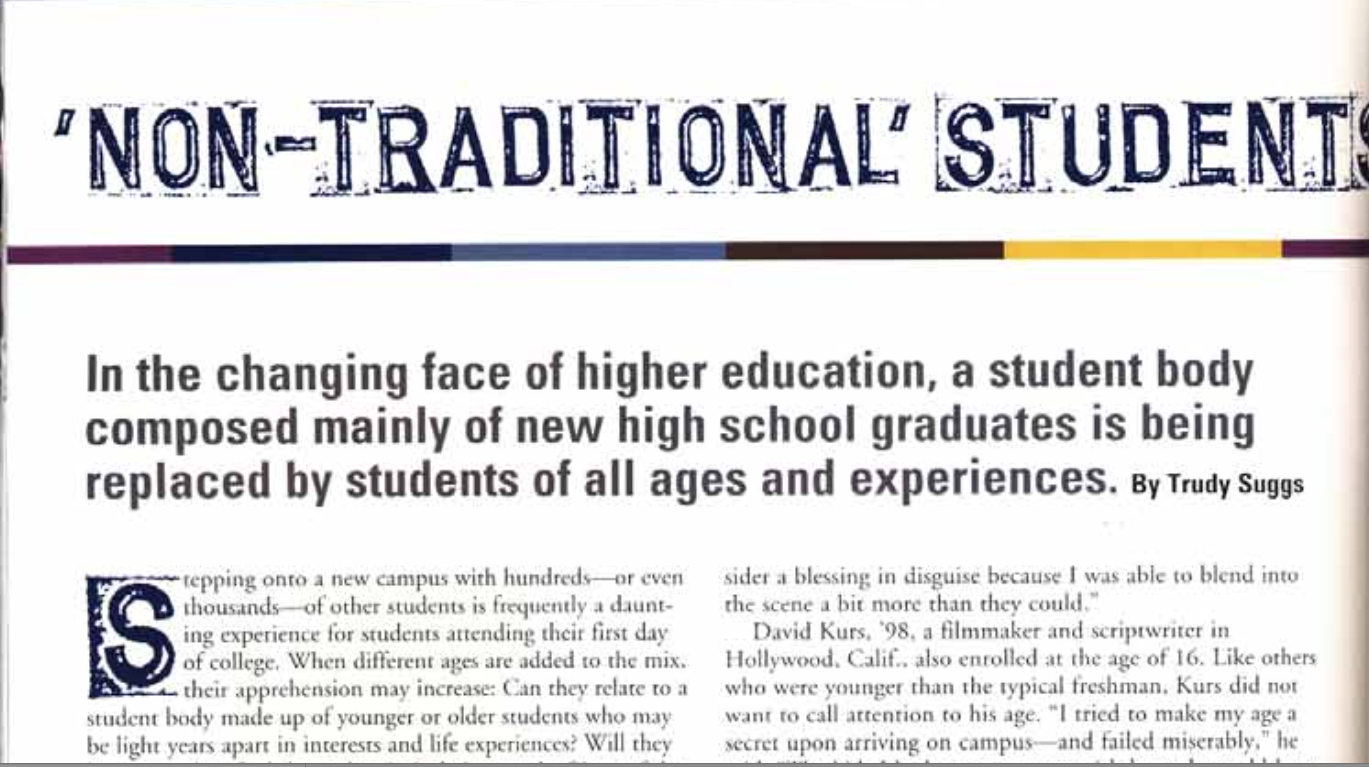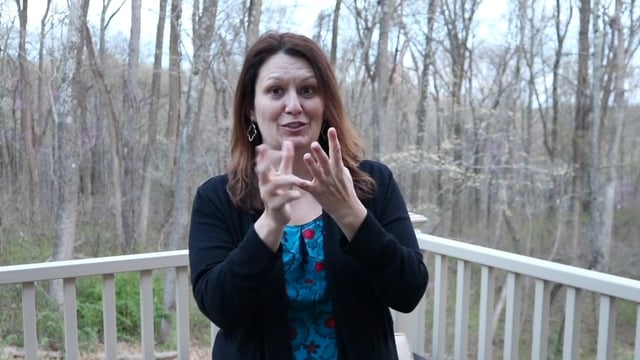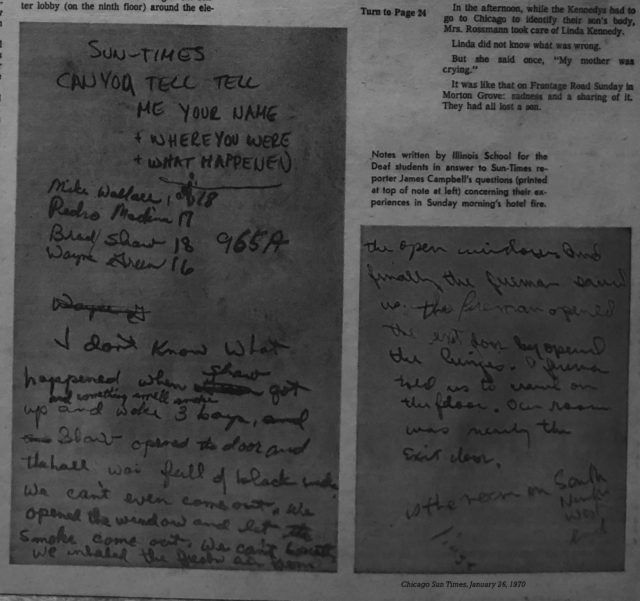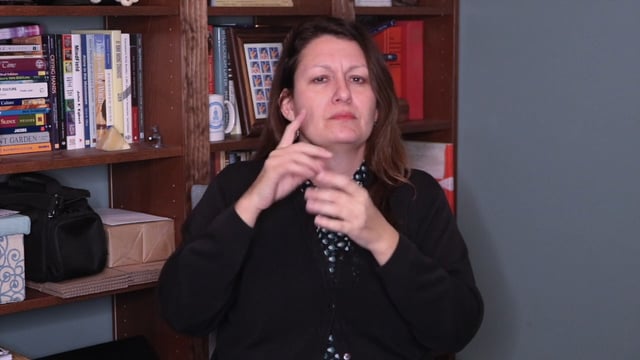This article originally appeared in Gallaudet Today’s Spring 2009 issue. Click here to view the print version.
In the changing face of higher education, a student body composed mainly of new high school graduates is being replaced by students of all ages and experiences.
Stepping onto a new campus with hundreds – or even thousands – of other students is frequently a daunting experience for students attending their first day of college. When different ages are added to the mix, their apprehension may increase: Can they relate to a student body made up of younger or older students who may be light years apart in interests and life experience? Will they be accepted or find themselves in isolation on the fringe of the campus social scene?
Fortunately, these first-day jitters are becoming a thing of the past. “Non-traditional students,” as they are often called, are growing in numbers; in fact, they are steadily becoming part of the norm for the student body at colleges and universities.
Although the average age of a college student is 18 to 25, the number of students over age 25 has skyrocketed at colleges and universities everywhere. According to Back to College, an online resource for adults returning to college, 28 percent of all college students were 25 years old or older in 1970; in 1998, this increased to 41 percent. The National Center for Education Statistics states that students 35 years or older soared from 823,000 in 1970 to an estimated 2.9 million in 2001 – an increase of 19.2 percent. Current estimates put the number of students who are over 25 at 47 percent of the college student population.
An early start
Very little research exists on college students who are younger than 17 years old, but one study by the University of Washington found that young students – specifically, those between the ages of 12 and 14 – “don’t fit the stereotype of unhappy ‘nerds’ who are humorless, isolated misfits,” but rather, “extremely versatile, interested, interesting, and sociable.”
Tom Holcomb, ’80, a professor in the Interpreter Preparation Program, Center for Deaf Studies and Special Services at Ohlone College in California, came to Gallaudet at the age of 16. “Although I had family nearby, which was a huge help, I often felt left out and almost disconnected from the other students,” he said. “But in retrospect, I realize it was mostly a self-inflicted perception.” He also noted that there was more attention given to four of his fellow freshmen – who were all female and all 16 years old. “Most of the campus community was focused on them instead of me, which I consider a blessing in disguise because I was able to blend into the scene a bit more than they could.”
David Kurs, ’98, a filmmaker and scriptwriter in Hollywood, Calif., also enrolled at the age of 16. Like others who were younger than the typical freshman, Kurs did not want to call attention to his age. “I tried to make my age a secret upon arriving on campus – and failed miserably,” he said. “The kids I had gone to camp with knew how old I was and told everyone else. As is probably the norm, I never made an issue out of my age, but everyone else did.” There were advantages to being young, though, he said with a chuckle. “I loved that because I was younger than the others, everyone thought I was a genius. Rumors spread about my photographic memory, that I had received a job offer from NASA, and that I had memorized the dictionary – none of which were true. Instead of denying these queries, I would just smile, vaguely affirming the truth of these rumors.”
Both Holcomb and Kurs credit extracurricular activities such as sports and student government with helping them fit in. Holcomb added that when he joined a fraternity, he “finally felt accepted, even though I realize I was accepted all along. It was simply a confirmation for me that I really did belong there.” Kurs said, “I was probably more suspectible to influences. I think the only difference, if any, between myself and the other students was that I sought ut role models with more effort. I was more eager to participate in the rituals and traditions of the freshman class, probably because I didn’t bother to question the point of these activities. I wanted to be able to say that I took part in everything.”
Timothy Jaech, ’61, a retired school administrator, stepped on campus in 1957 when he was 15 years old. Although he had an older sister who kept an eye on him, he had his share of humbling experiences, particularly one evening as a freshman watching a lively discussion in the Men’s Reading Room of College Hall. “I loved those bull sessions, and it was fascinating to watch the upperclassmen match wits. After watching much intellectual ‘bull’ going back and forth, I raised my hand to toss in my two cents’ worth,” he chuckles. “One of the upperclassmen looked at me and remarked, ‘What does a little kid like you think you can add to this discussion?’ Miffed, I shot back, ‘I’m not a kid! I’m 15 1/2 years old!’ I think the whole room broke out laughing, and I was sorry the minute I said it.”
Other notable young alumni include Astrid (Amann) Goodstein, ’65, and her husband, Board of Trustees member Harvey Goodstein, ’65, both of whom retired from Gallaudet after long and distinguished careers and reside in Scottsdale, Ariz. They both began their years at Gallaudet as 16-year-old preparatory students. It is interesting to note that Harvey’s sister, Roslyn Rosen, ’62, and Astrid’s brother, Franklyn Amann, ’64, also attended at a young age. Astrid, who graduated from the California School for the Deaf in Berkeley (CSD), said, “I was probably more or less a prima donna at CSD. Upon arrival at Gallaudet, I wasn’t used to competition in and outside of class, so I felt humbled and even insecure. Besides, there were no summer programs like Youth Leadership Camp or Junior NAD back then, so leadership skills in those days were developed by trial and error. Even so, I’m forever grateful for my unique, non-stop and holistic education at Gallaudet.”
The Goodsteins noted that they would probably have different experiences if they were students at modern-day Gallaudet. “Back then, the campus was so small that everyone knew everyone,” Astrid explained. “We were really like a family, and people were always watching out for and supporting us. We also had a curfew and study halls. I don’t know how I’d handle it today, in such a different culture and world,” she said, adding that the university has organizations and programs implemented to support student success.
Never too late
On the opposite end of the spectrum are students who decide to either start or return to college after their adult lives are well underway. A commonly cited reason for enrolling at college at this stage of life is to improve employability. This was the case for Catherine Garbacz, ’97, of Sacramento, Calif. A single mother of two daughters, Garbacz was laid off from her job in 1993 and decided to complete her college degree at age 43 by coming to Gallaudet. An active member and president of the Never Too Late Club, Garbacz found her experiences as an older student double-majoring in government and English to be unique.
“The biggest challenge for me was competing with younger minds, and sharing a room with kids who did not have the life experiences that I had already attained,” she remembers. “But I dealt with it by receiving support from other older students, especially the Never Too Late Club, and becoming a resident assistant.” To stay informed about campus life issues, she became even more active with organizations such as the Student Body Government.
Tom Benziger, ’94, of Woodridge, Ill., originally attended Gallaudet in the 1960s, but left before completing his degree. Benziger was working as a deaf services advocate at Access Living in Chicago, Ill., an independent living center, supervising several staff members who held master’s degrees. Some of them felt Benziger, despite his experience, should have at least a bachelor’s degree.
After many hours of discussion with his wife, Benziger made the decision to return to Gallaudet. “It wasn’t easy, because I knew I’d have to maintain a long-distance relationship with my wife,” he explained. “You have to remember that in the early 1990s, we only had the TTY for live conversation, and that was cumbersome. It was harder than anything I’ve ever had to do,” he said, adding that it was well worth it. The Never Too Late Club, he said, gave him unparalleled support when he missed his family.
On campus, Benziger quickly became a strong advocate for non-traditional students, but sometimes found it awkward when his teachers were younger than him, not to mention the realization that his classmates were the children of people he had attended Gallaudet with in the 1960s. “As a government major, it was always strange being in classes with students who had no idea of how real-life advocacy or governmental matters worked,” he recalled. “They also complained about so much, even though they had access to computers and other modern-day technology. Back in the 1960s, I had to do everything by hand or on a typewriter.” Even so, Benziger found the experience enriching. “I learned a lot from my classmates, regardless of age, and from professors such as the incomparable Dr. Mary Malzkuhn, a wonderful teacher.”
Both Garbacz and Benziger agree that their personal sacrifices have paid off. Benziger was promoted as soon as he returned to Access Living; Garbacz attended graduate school at Gallaudet and San Diego State University, and is now a rehabilitation counselor for deaf, hard of hearing and deaf-blind individuals with the California Department of Rehabilitation.
Until recently, the majority of non-traditional students did not have services catering to their unique needs. Benziger recalls how difficult circumstances could be for older students living off-campus: “There was a fellow student in her 70s, and she lived off-campus. She often had no place to go in between classes, so she had to wait hours and hours wandering the campus. It was physically difficult for her to lug around so many textbooks.” Benziger provided the use of his dorm room so that she could have a place to go in between classes.
Today, Gallaudet offers many other services to accommodate its changing student body, including non-traditional students who live on campus. The Commuter Lounge, where lockers and computers are available, is one example; it serves as an ideal place for them to stay between classes.
Identifying needs
The Hobson electronic communication system, used by over 1,000 colleges and universities – including Gallaudet – tracks student participation and ensures that students don’t fall through cracks. It has given invaluable insights in meeting students’ needs, said Associate Provost for Enrollment Catherine Andersen. Hobson has provided useful information for non-traditional students regardless of age, Andersen said; the university can send out communications tailored to students who are in specific age brackets, have children, or possess other unique characteristics. Additionally, incoming freshmen are required to take a first-year course as part of the general studies requirement, which assists in determining areas of interest for study, first-year concerns and challenges, and more. “When we did a research study of persistence, we found that those who took this course had a 11 percent higher persistent rate into the second year,” Andersen said.
Retain is another web-based system that helps Gallaudet communicate with current students in ways that encourage them to stay focused on their academic pursuits. “We can connect them to areas of interest, or communicate with them in areas of concern,” said Andersen. “Faculty can report attendance patterns, and coaches can interact with faculty and students so that everyone is supporting the persistence of students.”
In all, the Gallaudet experience provides to be unique for each student, regardless of age. “I don’t look back and evaluate whether entering Gallaudet at such a young age was a mistake,” Kurs said. “My development adjusted around that event. It made the way I am. Looking back, I had the opportunity to take the time to develop personally and professionally after graduation a bit longer than others did. For the first time in my life, I had the luxury of time – I traveled a lot, and hopped from job to job.”
He added, “I think that all of us who entered Gallaudet at earlier ages realize that there are no absolute rules. We can adapt to the situation, or not. We all have it in us to prosper on campus at any age.”
The author: Trudy Suggs, ’95, owns T.S. Writing Services and came to Gallaudet as a 16-year-old freshman.
Copyrighted material. This article cannot be copied, reproduced, or redistributed without the express written consent of the author.





